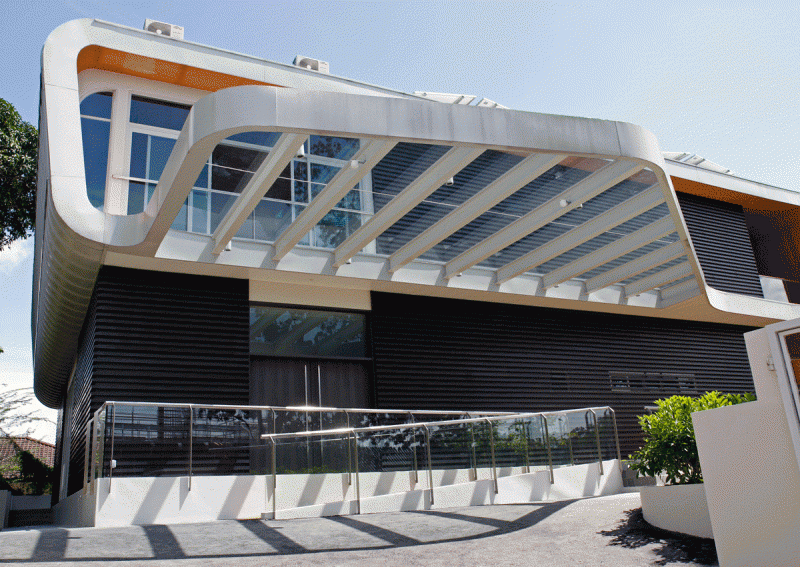Power house

Staying in the B House off Dunearn Road, you may never have to pay any energy bills.
This is because it is one of the first carbon-negative homes in Singapore. This means that it can generate more power, via solar panels, than it consumes.
The property comprises two separate residences on a plot of land measuring about 17,500 sq ft.
On the roof of one of the houses, there are about 1,100 sq ft of solar panels, capable of generating energy of 16,720 kilowatt hours a year.
A family of five is estimated to consume 8,000 kilowatt hours of energy a year, which means that the B House has a potential annual energy surplus of 8,720 kWh.
The surplus can potentially be sold back to a national energy grid - but the authorities do not have the practice of buying power - or it can be put to use in lighting, cooking or cooling.
The solar panels are part of an eco-friendly design ethos governing the entire property.

Both houses, each about 5,400 sq ft in area with five bedrooms, have sinuous curves and a facade made mostly of aluminium from recycled content. Other green materials used include reconstituted timber.
The B House is named after owner Belinda Young, a Singaporean chartered certified accountant. The plot of land belongs to her family and originally had a 1950s house on it.
Tearing that down plus building the new B House cost $6 million in total, she says. Ms Young, who declines to give her age, plans to lease out the new property.
The houses were designed by Pomeroy Studio, a Singapore-based sustainable design firm, which drew on the "passive design techniques" used in black-and-white colonial houses in Singapore.
Passive design refers to an approach to building design where one can use the sun and wind to naturally cool and light a building, minimising energy consumption.
In this way, the building's orientation is crucial. There are no wall windows on the east- and west- facing sides to reduce sunlight entering and heating the house.
Windows on the north and south facades facilitate cross-ventilation, where natural breeze flows between opposite sides of the building.
To save on electric light, the north-south windows allow natural light to filter in, an effect boosted by sky lights.
Professor Jason Pomeroy, 41, founding principal of Pomeroy Studio, says the strategic use of windows, as well as "other tropical elements such as shutters, verandahs, courtyards and high ceilings", can bring temperatures down to a cool 23 deg C even in the day.
Because of its green design, the B House was awarded the Building and Construction Authority's Green Mark Platinum Award in 2014, the highest award for environmentally friendly buildings in Singapore.
Ms Young says the idea for her house came from a zero-carbon house designed by Prof Pomeroy in Shah Alam, Malaysia, called the Idea House.
Generating as much energy as they consume annually, zero- carbon buildings have in recent years attracted attention as a way to conserve energy and combat climate change.
"I wanted to develop a house that would be highly sustainable in order to reduce energy and water bills," says Ms Young.
Although the houses do not need cooling, they have air-conditioning and ceiling fans, she adds, to "offer choice" to future tenants.
venessal@sph.com.sg

This article was first published on February 6, 2016.
Get a copy of The Straits Times or go to straitstimes.com for more stories.